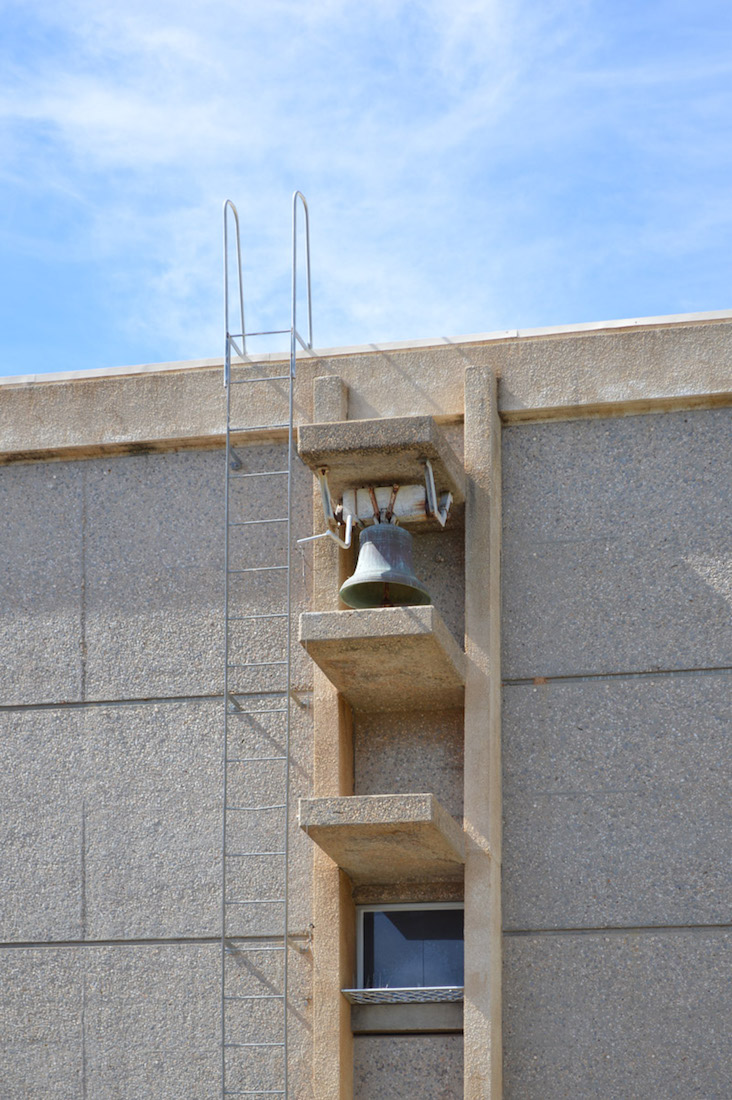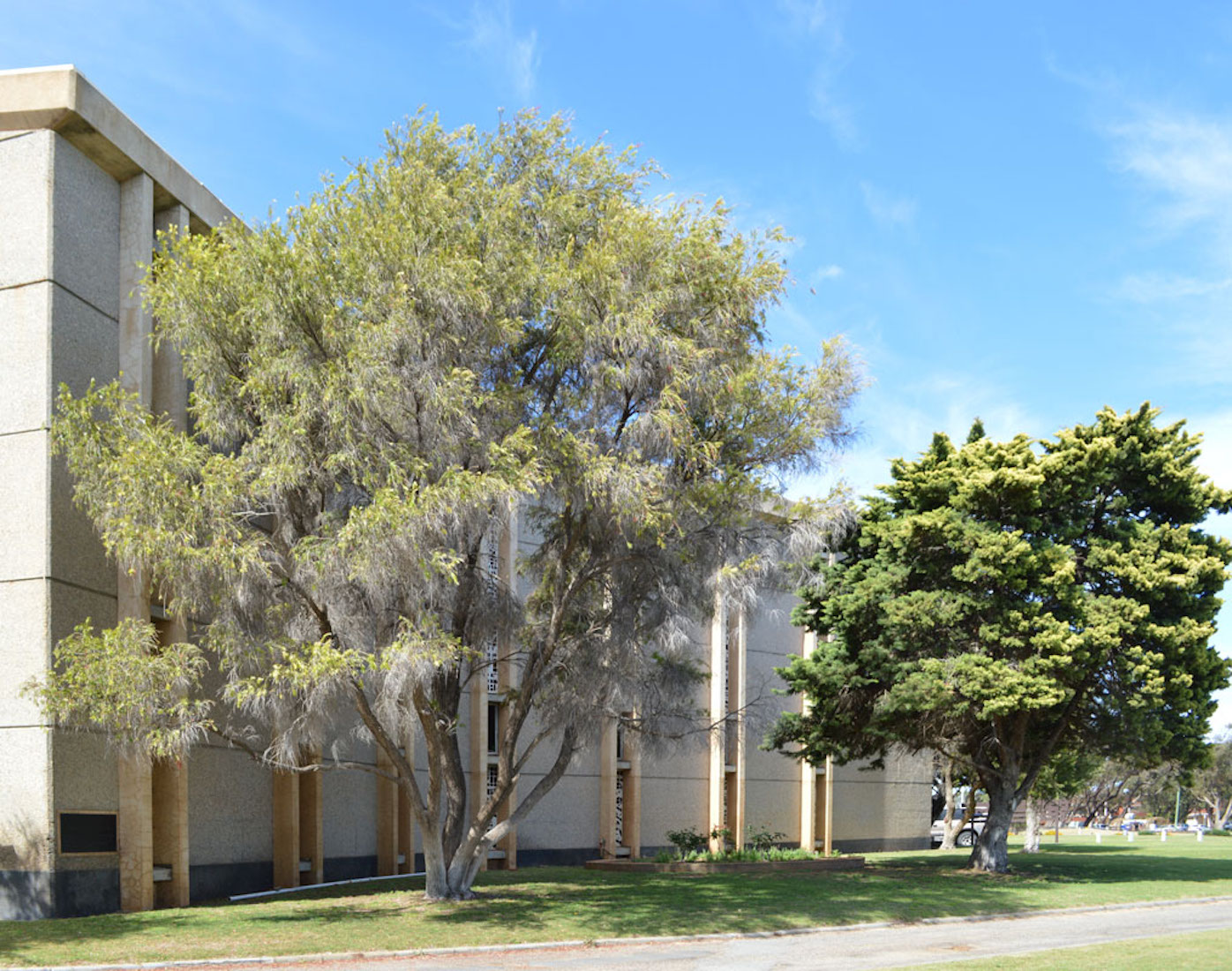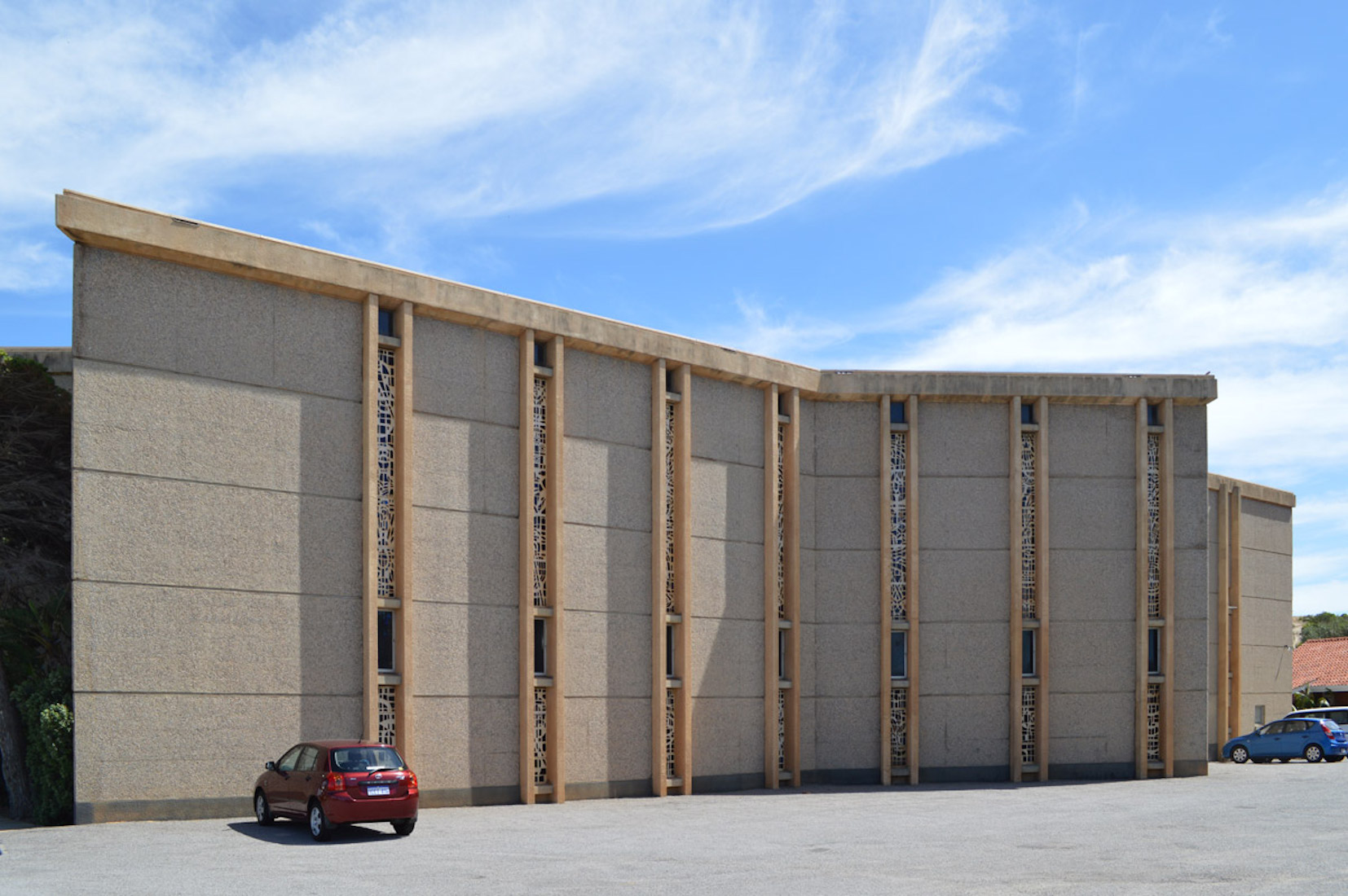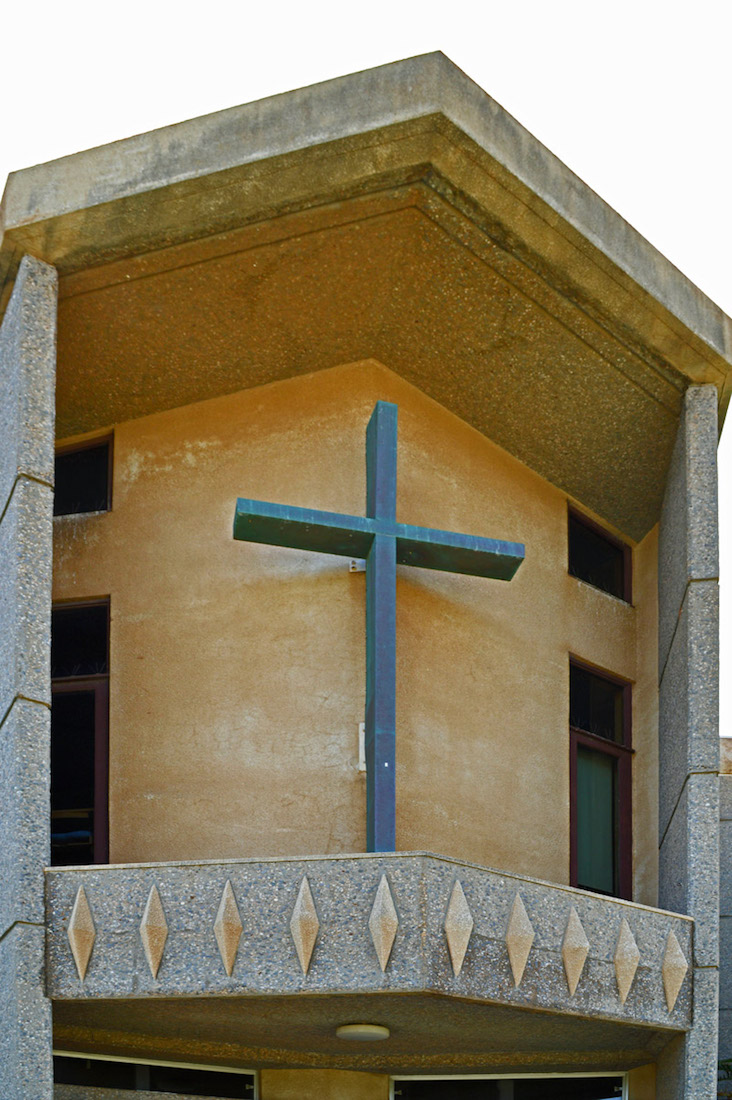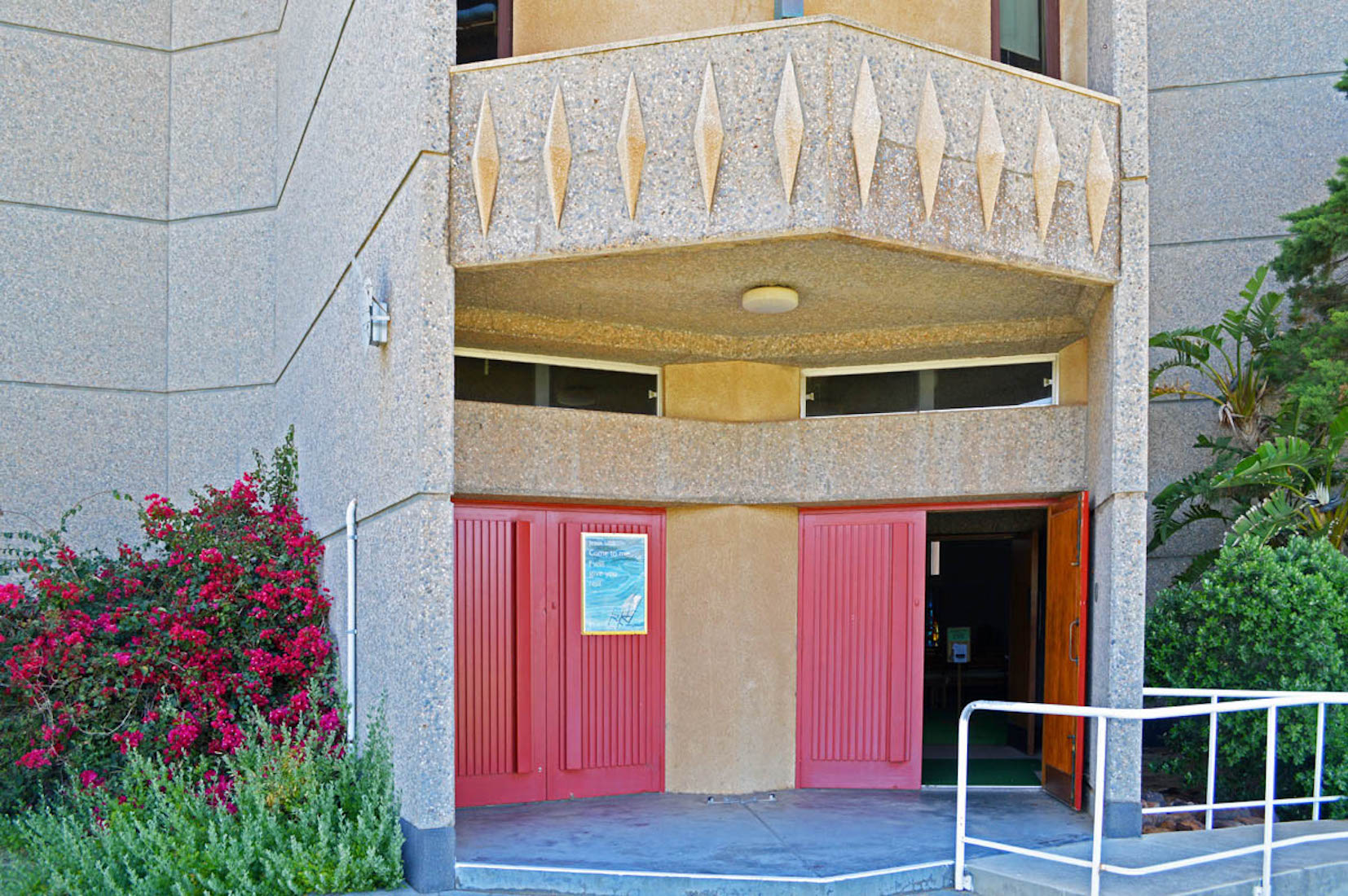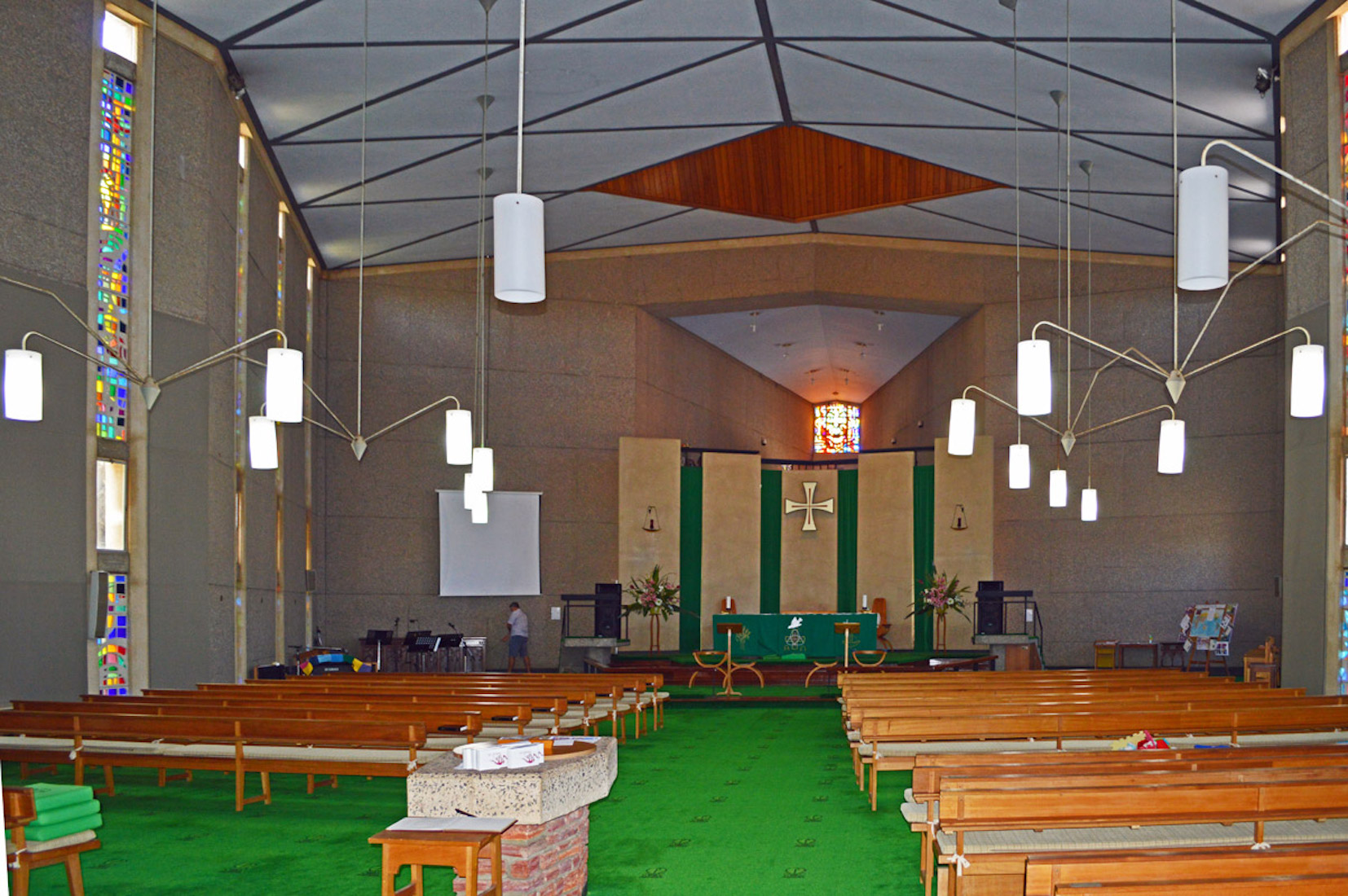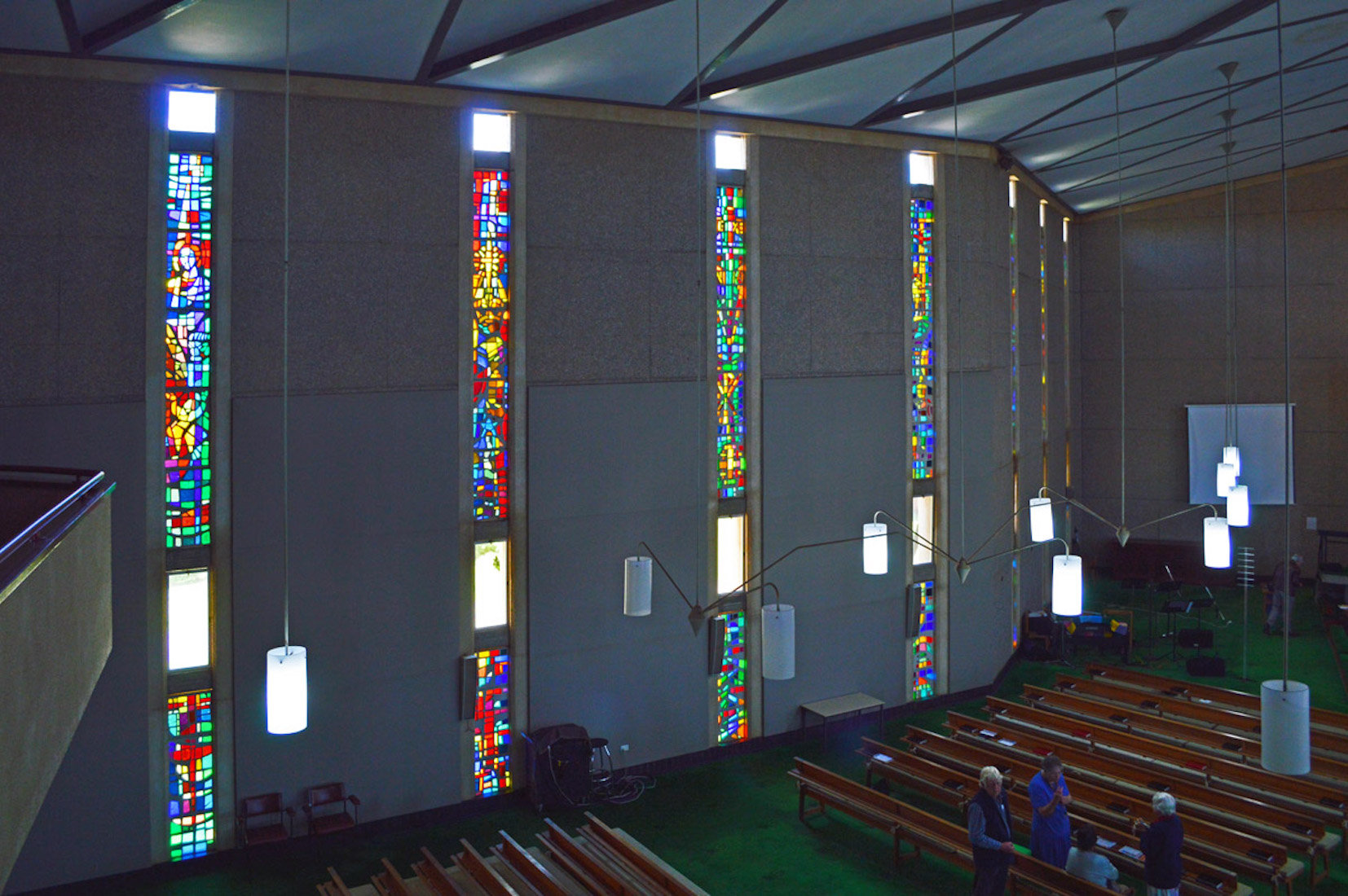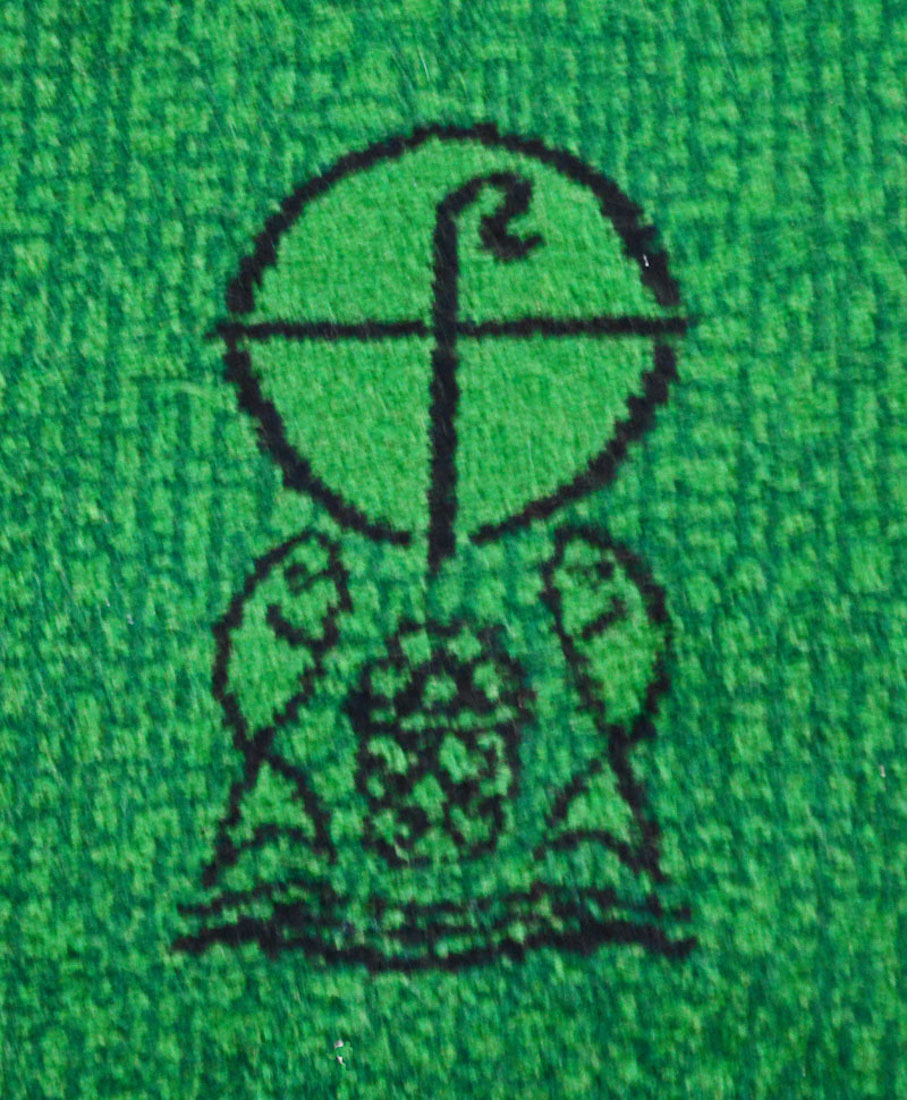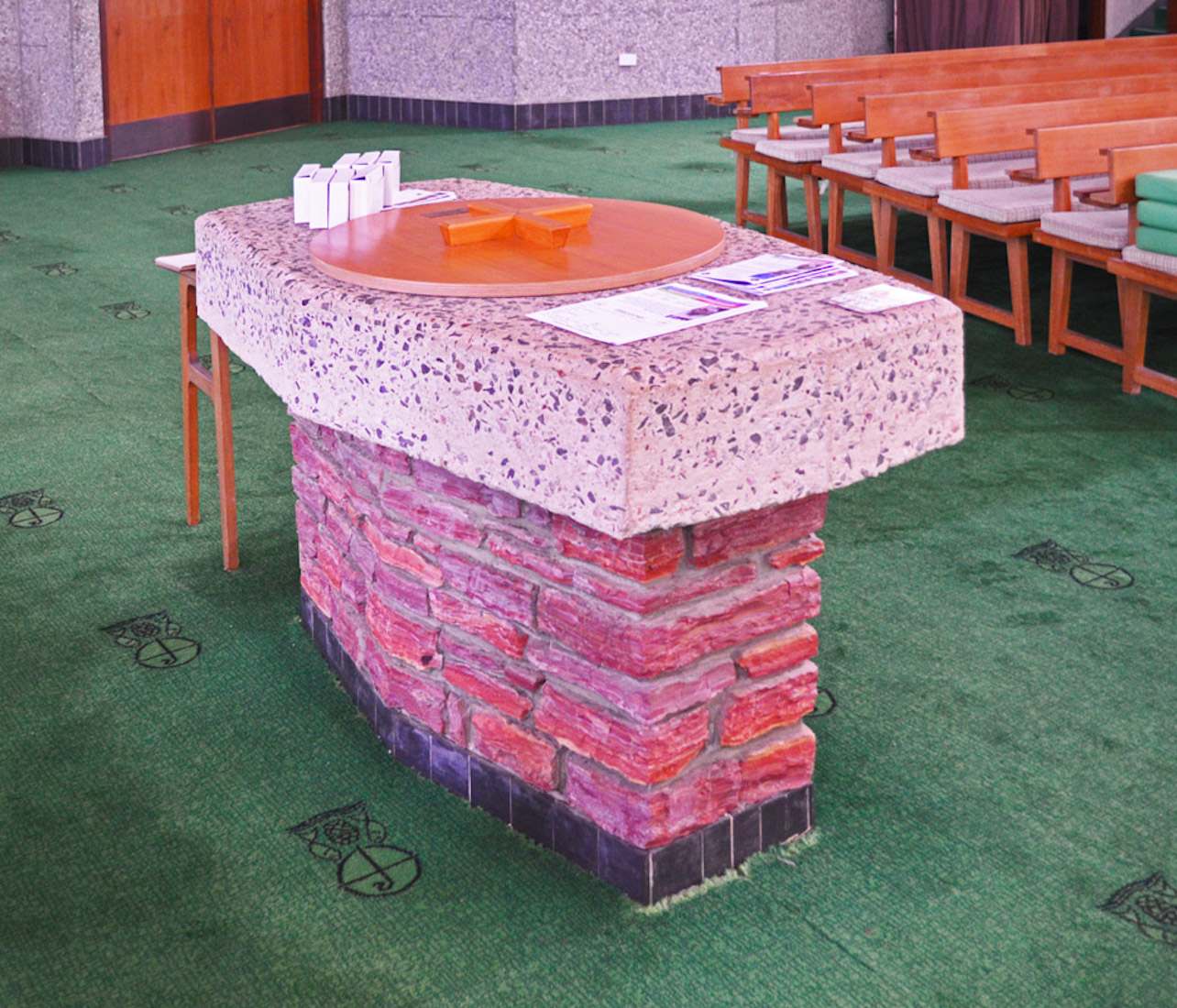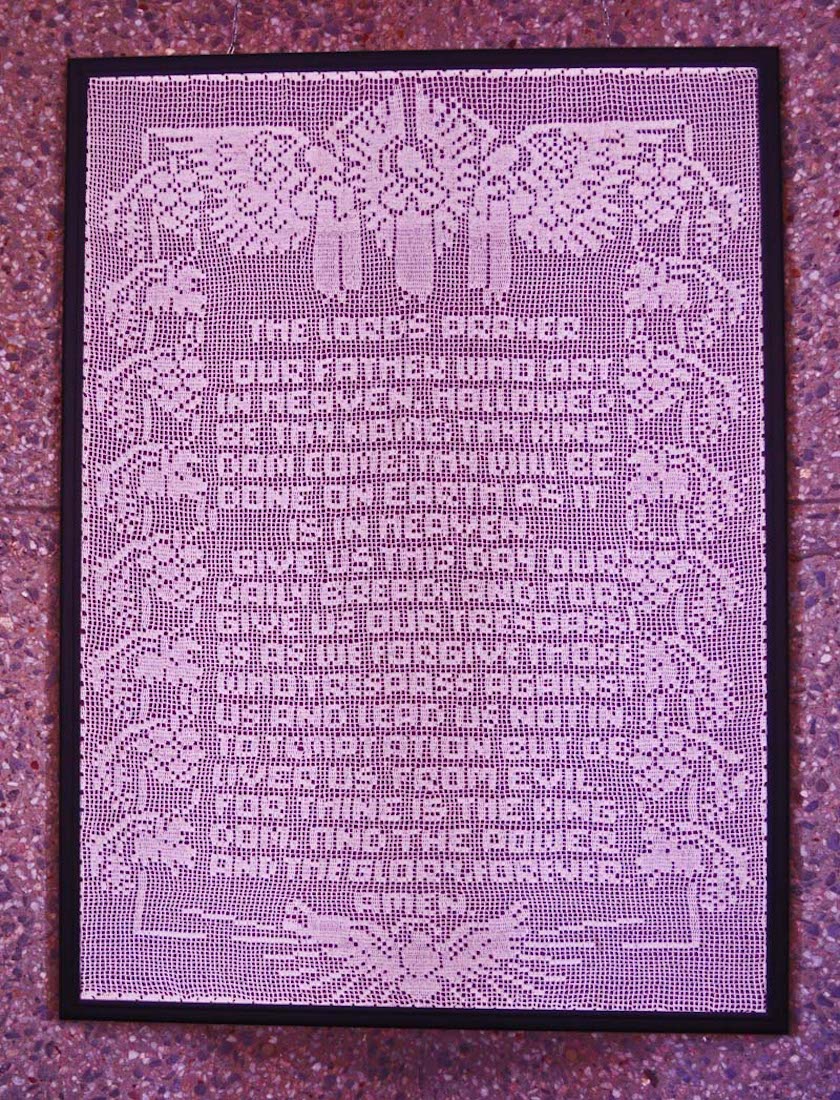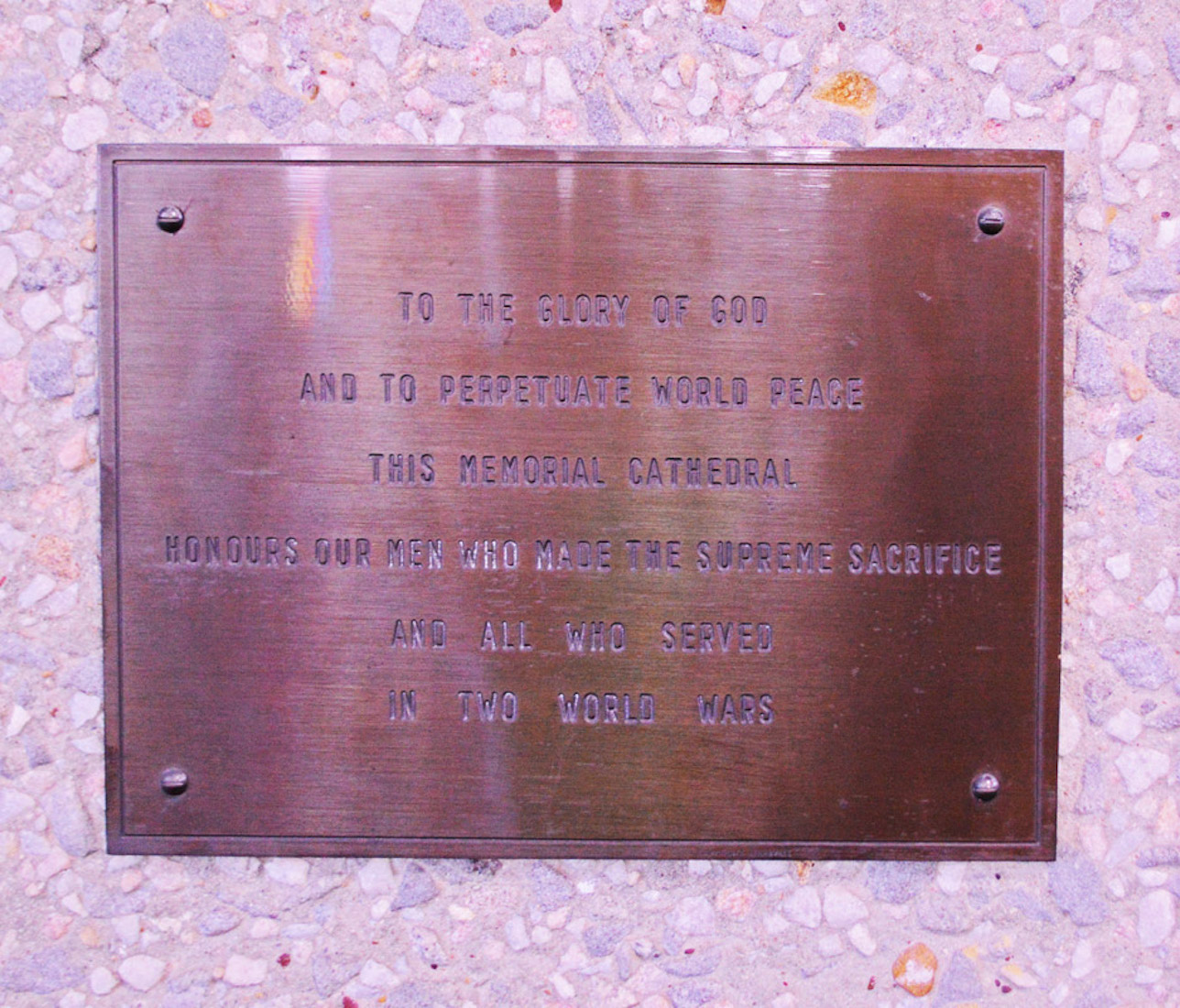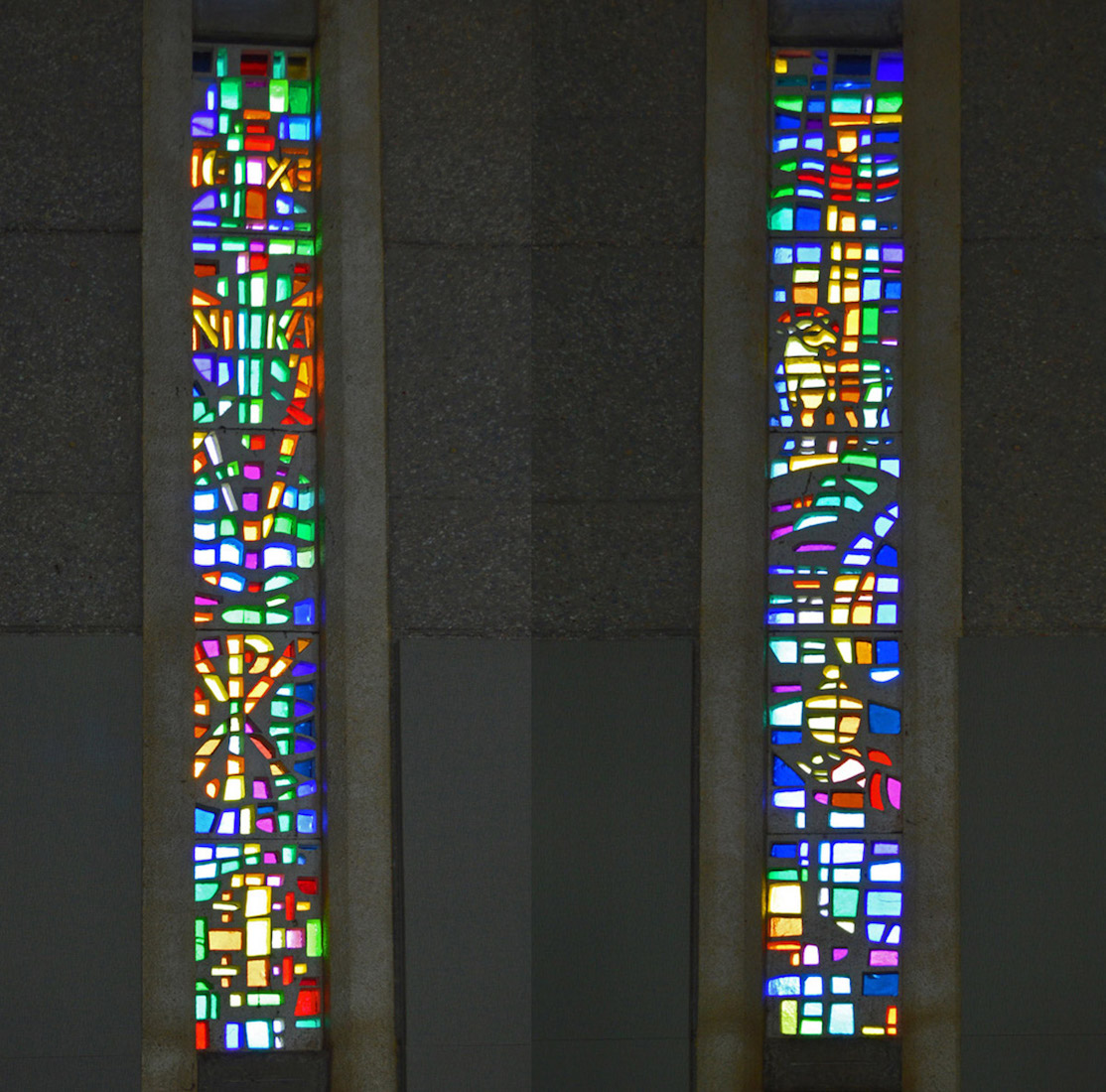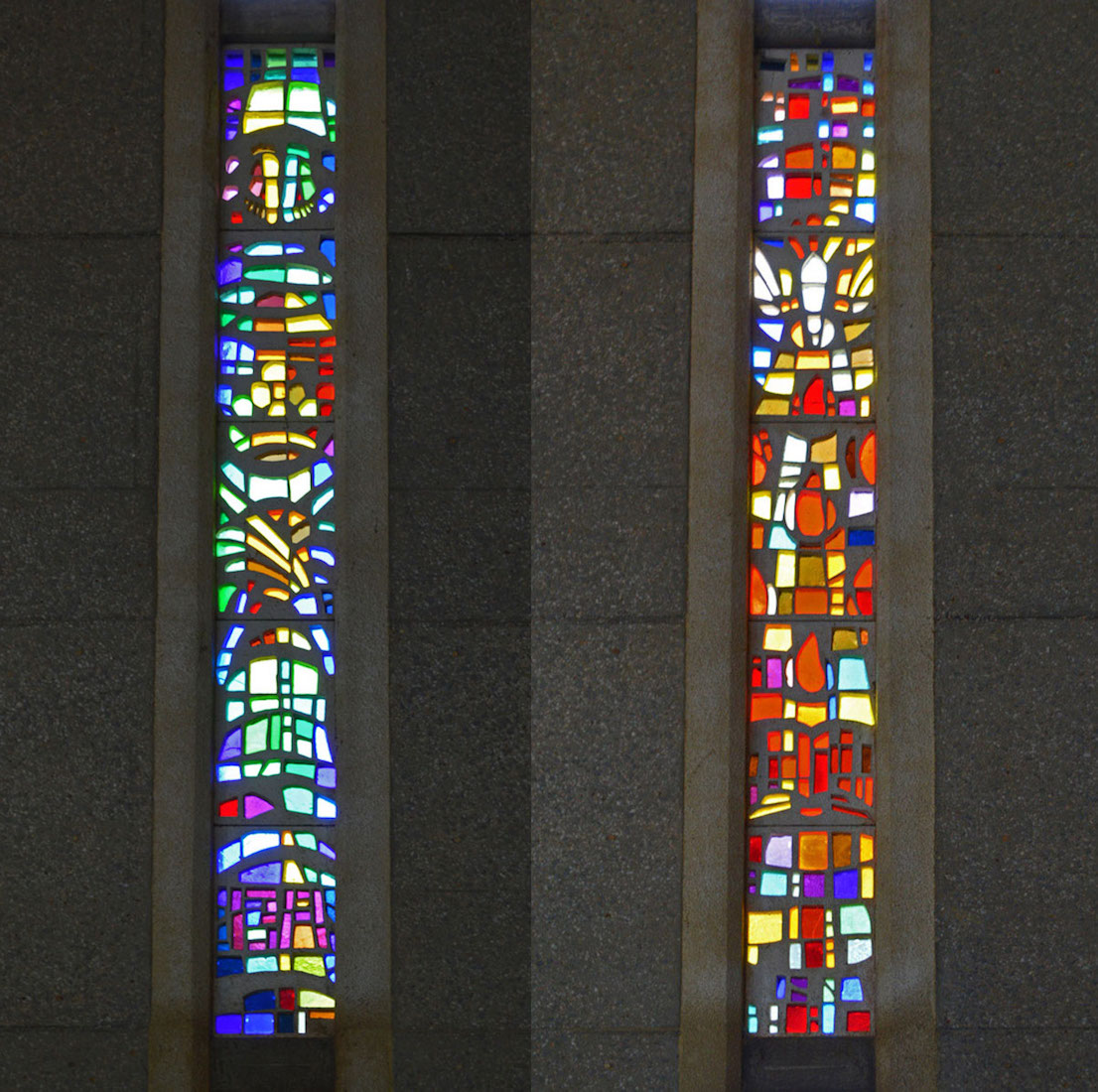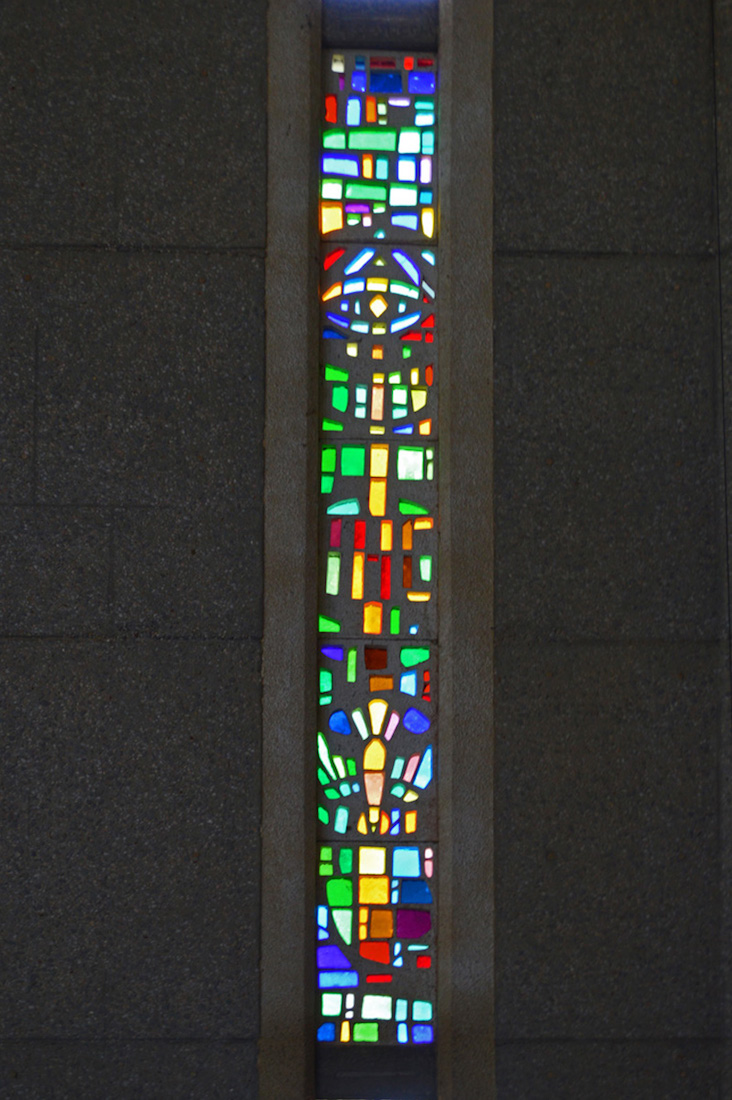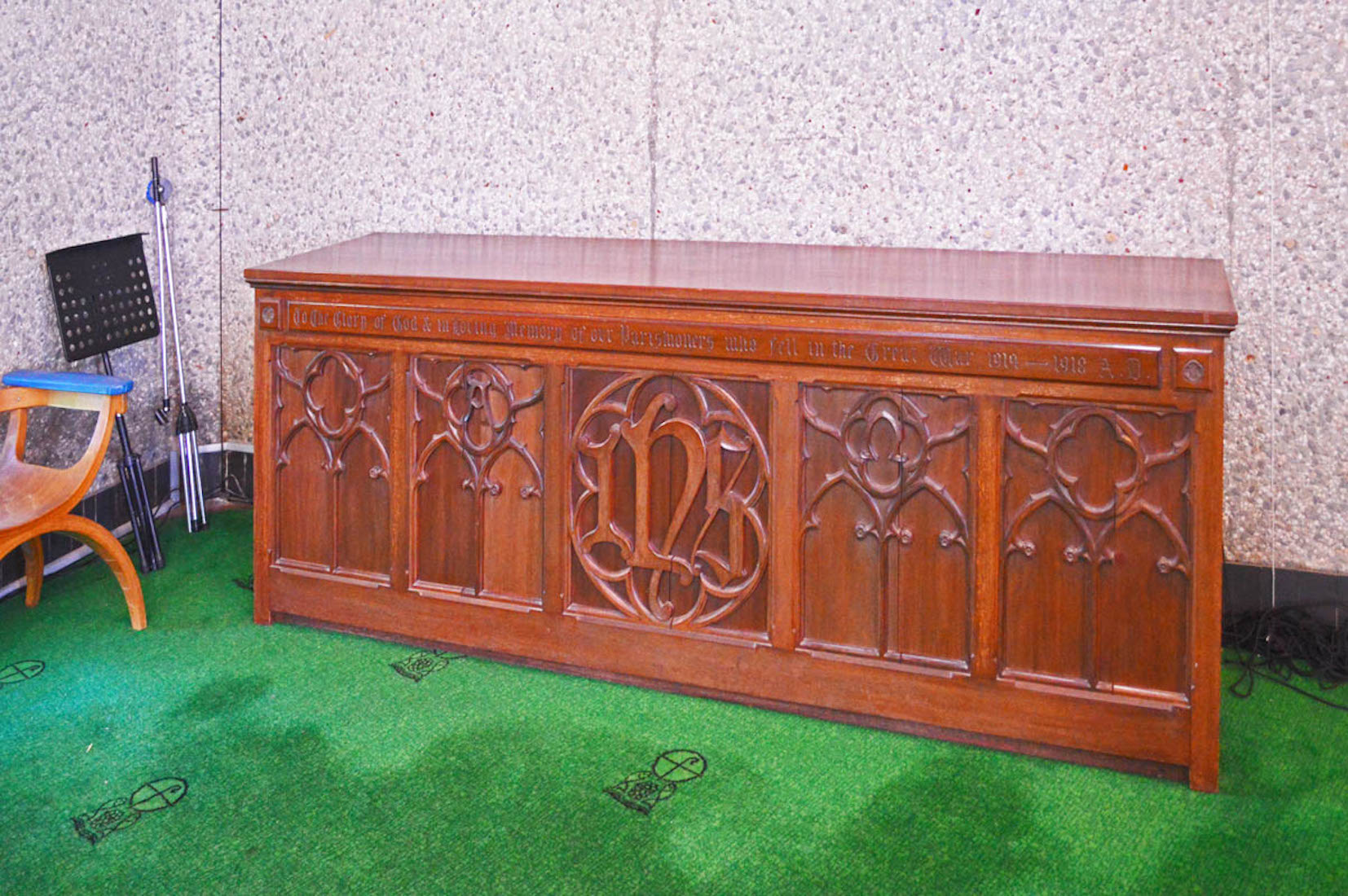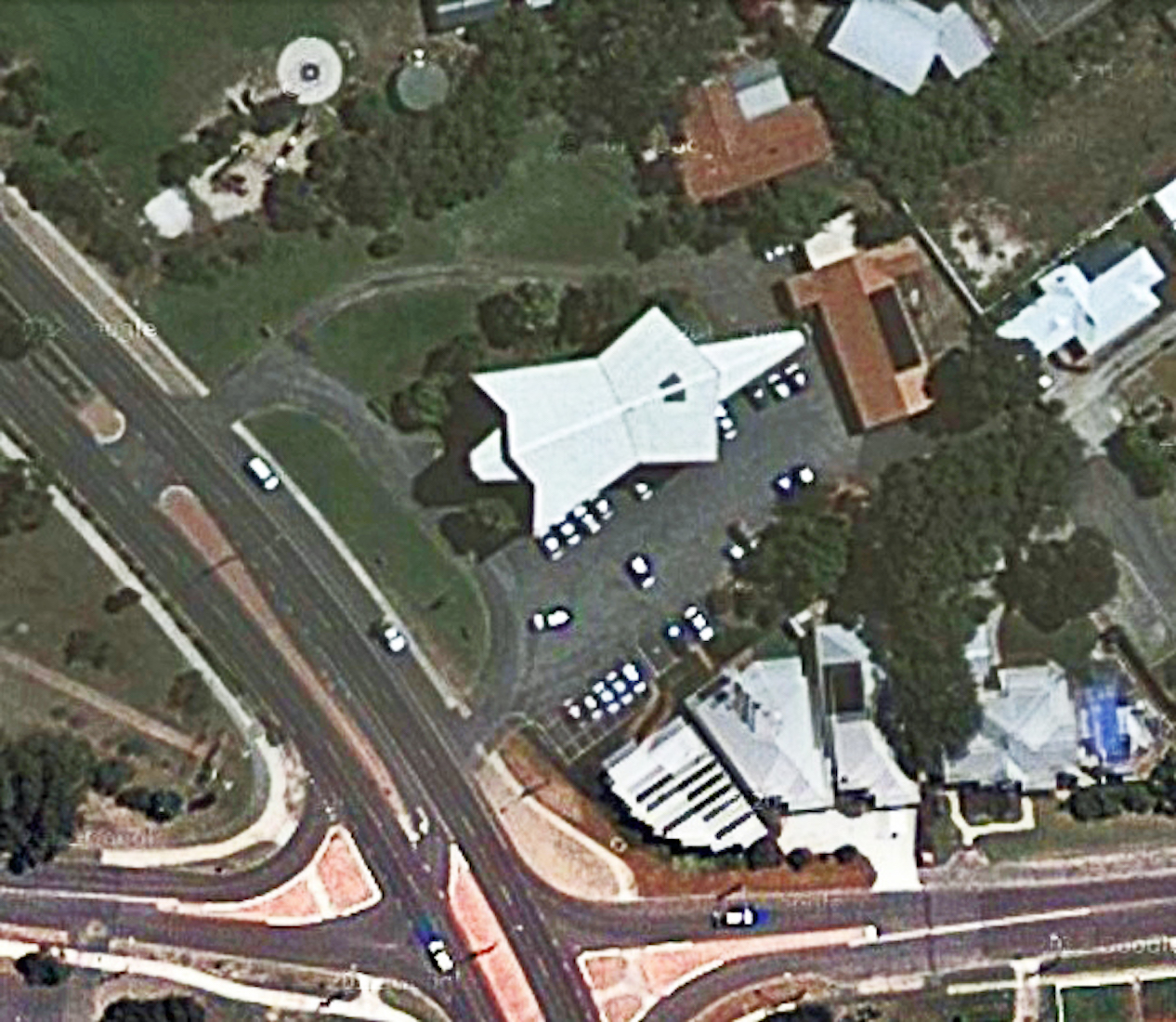
Travelling north from Perth, the Brand Highway becomes Cathedral Road as it enters Geraldton. Soon afterwards the Cathedral Church of the Holy Cross appears prominently and rather starkly on our right. Star shaped from above, the sign of the Cross is marked by the gables and gullies of the roof. We observe that the Cathedral is angled at about 30° anticlockwise from true east – west: near enough for us to use our liturgical directions of North/South/East/West without confusion. We note the small skylight in the roof, giving light to the interior. The star shape was designed to represent the description of Jesus as ‘the Light of the world’, and the four corners to the main roof as pointers to the four corners of the earth, relating to the spread of the Gospel. PLAN
2. SIGN
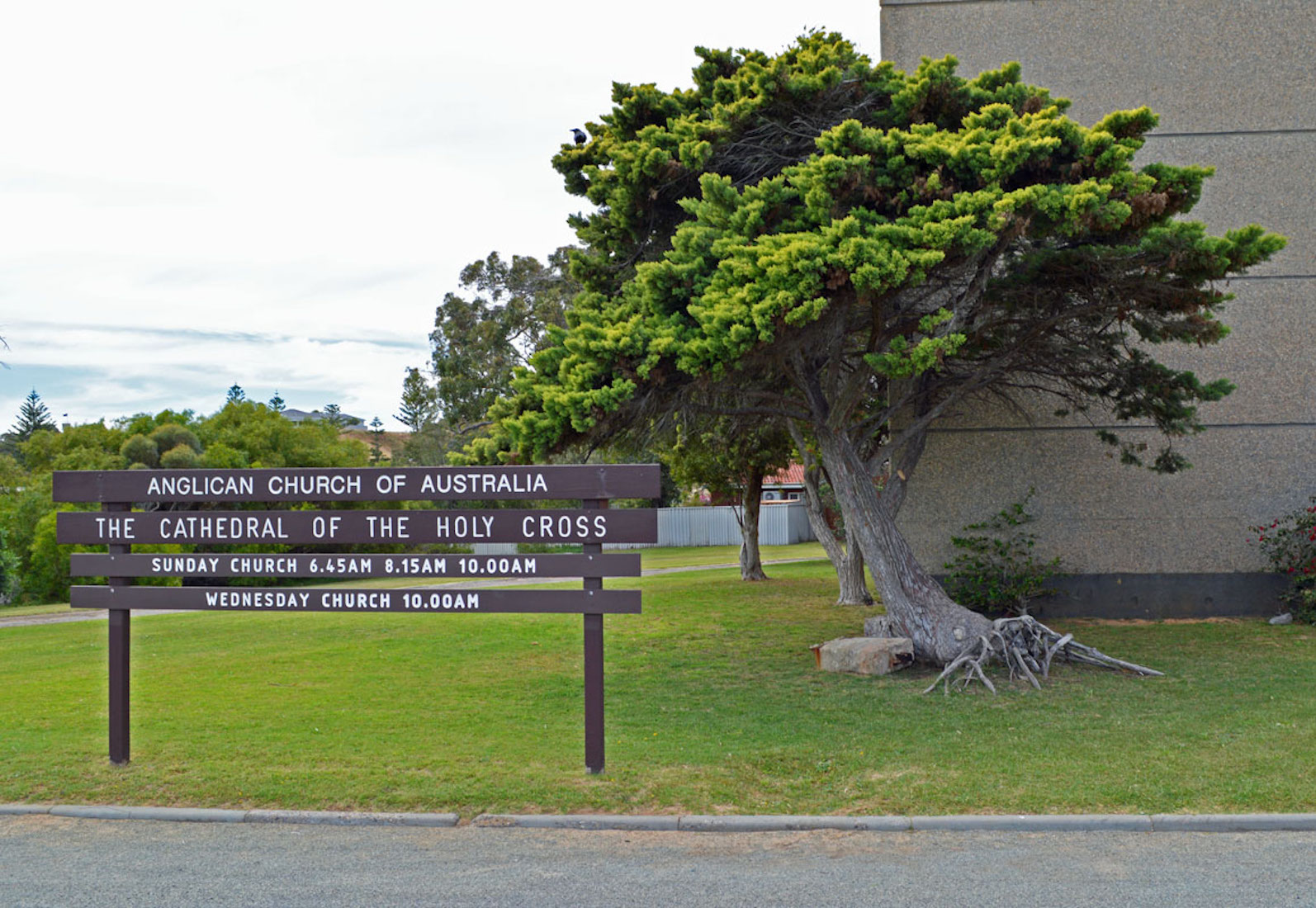
It may seem curious having an Anglican Cathedral in a city the size of Geraldton, but this Cathedral serves an enormous area of Western Australia – all parishes to the north and west of here. I’m unsure if this wonderful tree has any spiritual significance, but it certainly says something about the Geraldton winds!
3. BELL
We follow around the exterior of the Cathedral in a clockwise direction to find this bell hanging near the North-East corner. For a Cathedral which seems so determined to be unlike traditional cathedrals, this seems rather an anachronism.
4. NORTH WALL
From the North-East corner we obtain this attractive view of the Cathedral. The long narrow windows with their vertical concrete side shades were chosen to help keep the interior of the Cathedral cool in summer.
5. SOUTH WALL
The South face. You would have to really love this Church to describe this aspect as attractive. I am reminded of the old hymn: ‘A mighty fortress is ...’. It is interesting though to read the Cathedral history. Some of the guidance given to the architect reads: ‘The building has to dominate the landscape, the design has to be unusual, and not follow the Gothic style of English churches, yet have some symbolic meaning. It is to be built of local materials in a modern idiom, e.g. concrete, and it should illustrate as far as possible Australian characteristics such as ruggedness, spaciousness, boldness and strength.’.
6. WEST WALL CROSS
Returning to the West end of the Cathedral, facing out to Cathedral Road, we see this striking copper cross standing above the entrance to the cathedral. In the original brief given to the architect, ‘the entrance was to be as striking as possible to emphasize ‘Invitation’ and to be dominated by a Crucifix of Christ Regnant in Glory’. This was not achieved. There are several such indications that today’s Cathedral is not as ‘high church’ as these pioneers envisaged.
7. ENTRY
Below the large Cross is the entry to the Cathedral. Is it striking, impressive, grand? Architects of the old Gothic Cathedrals seem to have had much more to work with! It could certainly be described as bold, rugged and strong.
8. NAVE
We enter through the main West doors directly into the Cathedral nave. Immediately before us is the baptismal font, and a swathe of green carpet directs our attention to the altar. Behind the altar is a Cross, and behind that a brilliant square stained glass window, aglow with the morning sun. The wooden panel in the ceiling conceals an amber skylight which sheds light to the front of the Cathedral. A projection screen and musical paraphernalia suggest that this Cathedral might be more Modern than Ancient in its worship practice!
9. NORTH WINDOWS
Before investigating the Cathedral in detail, let’s climb the stairs to the Western balcony for an overview. It becomes clear that the pride and glory of this Cathedral are its stained glass windows. The windows shown here are along the North wall. As mentioned previously the windows are designed to allow for the extreme weather conditions of Geraldton summers. The windows on the North side portray the Great Saving Events of the Church’s year.
10. SOUTH WINDOWS
Here is a view of the South windows. These portray the ideas of Believing, Belonging and Behaving in human lives. The windows, made in concreted stained glass, were designed by Mr Carl Edwards of London, an artist of international standing, and were made by the firm of E. G. Gowers and A. S. Brown, Stained Glass Artists, of Greenmount, Western Australia.
11. CARPET DESIGN
As a community, Geraldton has wheat, wool and fish as its primary products. The basket with the five loaves and two fishes reminds us of the miraculous multiplication of the loaves and fishes – a ‘type’ of holy eucharist. The water beneath the fish signifies the water of baptism; here again are represented the two principal sacraments, baptism and eucharist. These two sacraments were esteemed highly by the first Christians. Christ as the Good Shepherd is familiar to all, and the pastoral staff as part of the Cross is a reference to Christ’s care for all.
12. FONT
The font [1] lies directly in front of the entrance. It is made from local pink stone. Its position near the entrance of the Cathedral, reminds us of the entrance into the Christian life. Baptism symbolizes the death of our old sinful life (hence the Font’s stylized coffin shape); we are united with Christ in his death. Baptism also symbolizes rising to a new life with Jesus, united with Christ in His resurrection (Rom 6:4–5).
13. TAPESTRY
This is the Lord’s Prayer tapestry [3] just inside the main doors. The cotton was donated by Joyce Willoughby, the needlework done by Dot Coleman and the framing by Rob Bartley.
14. PLAQUE
The Honour Plaque [3A] on the West wall reads: ‘TO THE GLORY OF GOD AND TO PERPETUATE WORLD PEACE THIS MEMORIAL CATHEDRAL HONOURS OUR MEN WHO MADE THE COMPLETE SACRIFICE AND ALL WHO SERVED IN TWO WORLD WARS’. It was dedicated on Mothering Sunday, 8th March, 1964 as part of the Consecration Service..
15. NORTH WINDOWS I
The left window is the Christmas Window [4]. The Christ Child is lying in a manger. An ox and an ass are above him, and above the whole scene, Christ is portrayed as a young man. The dominant amber colour around the baby represents the Light shining in the darkness. At right is the Epiphany Window [5], showing the baptism of Jesus and the coming of the wise men. Surmounted by the eight pointed star of regeneration are the crown and hands of the wise men offering gold, frankincense and myrrh. Below is the five pointed star of Bethlehem and water trickling from a shell denoting the waters of the River Jordan. The riches of the gospel of Christ are suggested by the dominant ruby colour.
16. NORTH WINDOWS II
At left is the Crucifixion Window [6]. This was a gift from the Greek Orthodox church. At the base of the Cross are two other crosses (the thieves) and the wavy bands of green and blue signify the earth and water. ‘God so loved the world that he gave his only Son.’ IC XC NIKA is the Greek for ‘Jesus Christ the Victor’. The Chi Rho is the superimposed letters XP, the first two letters of the Greek word ‘Christ’. The Cross of Jerusalem below refers to St Helena, the mother of Constantine, and her search for the true cross amongst the ruins of Jerusalem. At right is the Easter Window [7]. From the top is the banner of the Resurrection, the Lamb of God, the tomb, the stone rolled away, and the jar of ointment in the hands of Mary Magdalene.
17. NORTH WINDOWS III
The Ascension Window [8] (left). The sombre colouring represents the feeling of loss of the Apostles as Jesus ascends out of sight. Christ’s feet are pictured at the top. The crown above crossed palms represents Christ’s Kingship. The original Anglican Church in Geraldton was the Church of the Ascension, and the Guild formed in 1893 has remained active to this day, a record for any guild in Australia. The window is their gift to the cathedral, hence the monogram GA. The Pentecost Window [9] (right). The Holy Spirit represented by a dove surrounded by a circle denoting eternity is seen at the top of the window. Seven flames are for the seven churches of the Revelation. The Gospel is surmounted by a large Cross. Red, the colour for Pentecost dominates.
18. CROSS OF CONSECRATION
The first of six (originally 12) identical emblems featuring a small cross enclosed in a circle [11] representing eternity. They remind us that the church is built upon the foundation of the 12 Apostles. There is a large similar cross outside the main door, reminding us that Jesus Christ is the chief cornerstone (Eph 2:20).
19. NORTH WINDOW IV
Trinity Window [10]. An all seeing eye is the stern symbol of God the Father. The Greek monogram IHC surrounded by the circle of eternity symbolizes Jesus Christ the Son. The dove surrounded by a circle typifies the Holy Spirit. In the lower panel (not pictured) there are three circles which denote the equality of the three Persons of the Trinity.


